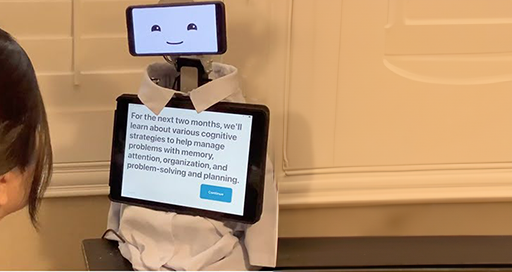CSE’s AI-Powered Technologies You Should Know About
A social robot to help people with cognitive impairments. Self-driving vehicles for delivery and micro-transit. A chatbot that gives movie recommendations
All are the result of AI research from CSE professors. Laurel Riek, director of the Healthcare Robotics Lab, Henrik Christensen, director of the Contextual Robotics Institute, and Julian McAuley, who has funding from Netflix, are among the professors featured across UC San Diego for work that could lead to the next developments in the “AI revolution.”



Previous
Next








